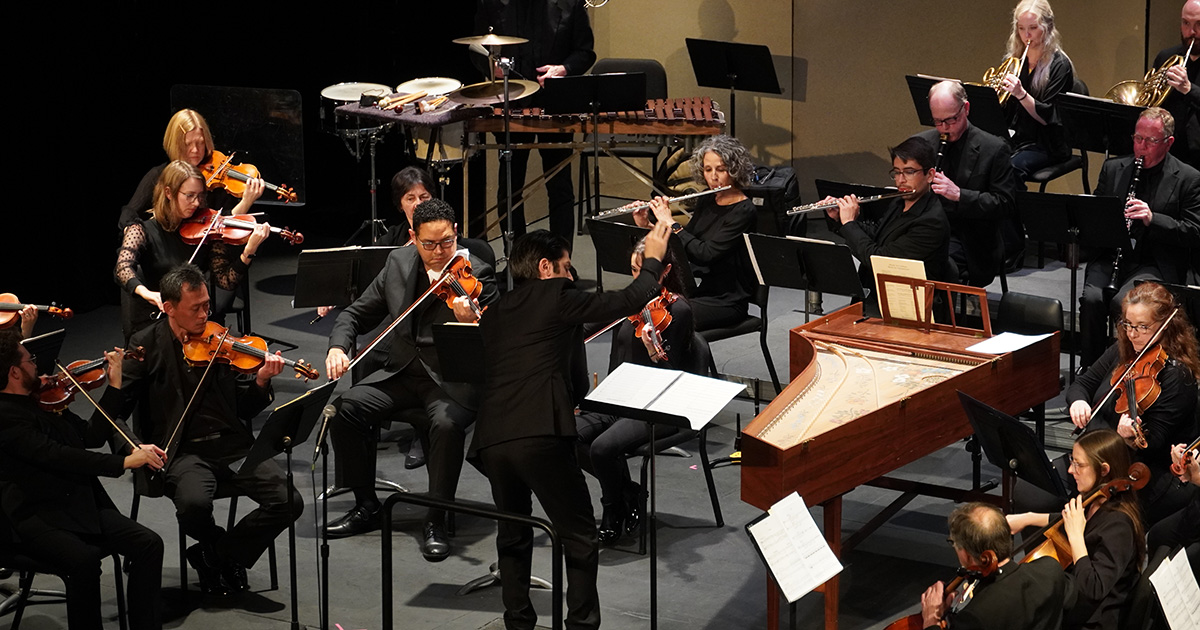The Knoxville Symphony Orchestra wrapped up its 2024-25 Chamber Classics season at the Bijou Theatre on Sunday in rather spectacular fashion. The concert was sold out, proving not only that Antonio Vivaldi’s Four Seasons is intensely popular with audiences, but also that the series itself is attractive to those who gravitate to a Sunday afternoon performance in the intimate acoustic environment of the Bijou. Gratifying, too, is the fact that the series uses its own orchestra members as soloists, something that regularly leads to inspired performances from musicians getting a turn in the spotlight.
That was certainly the case with last Sunday’s outing as Maestro Aram Demirjian allowed Vivaldi’s Four Seasons to showcase as soloists four separate violinists from the orchestra in the four concerti. As a result, the episodic character of each season was magnified as listeners were able to compare the stylistic and technique differences of the four players and their respective concerti. Interestingly, for violin fans, one also got a comparison of each players’ instrument vis a vis texture, string tone, and the effects of volume.

Although I didn’t notice it at first glance, each violinist had elements of their attire that suggested their particular season. Violinist Sean Claire was first up with “Spring” followed by Zofia Glashauser in “Summer.” Kyle Venlet took “Autumn” and I-Pei Lin finished with “Winter.” All of the soloists brilliantly exceeded the challenges of their respective concerto, each making their interpretation distinct, but smartly placing their performance in the middle of the lyrical-dramatic scale, avoiding both edginess on one extreme and matter-of-factness on the other.
Although the afternoon program was performed without an intermission, Demirjian had chosen two contemporary works to open that might preface the Baroque sensibilities of the Four Seasons in some way. First was Spectacle of Light by Stacy Garrop, a work commissioned by Music of the Baroque, a Chicago-based ensemble, that wanted a work to be performed opposite Handel’s Water Music on a concert as the performance world was emerging from a pandemic shutdown. To structure the piece, Garrop had examined images of fireworks to find the essence of explosions of colored light. For Demirjian and the orchestra, what emerged was a work that felt inspired by the Baroque, but certainly not an imitation of it. The work opened delightfully inverted, where brass dominated amid a driving rhythm, but then gave way to woodwinds and strings before building in intensity with an ending that takes first time listeners by surprise.
Next was Molly Herron’s 2023 work Spin, Span, Spun, a work for chamber orchestra in three movements. Herron, a member of the music faculty at Vanderbilt University, was present at the concert and stepped forward to offer: “I see the work too as as collision between of compositional ideas (such as those of Vivaldi and Haydn) and my contemporary ears.”
Somewhat invisibly, Spin, Span, Spun takes on a structure of fast-slow-fast, but this breakdown was one of character and texture more than tempo. Admittedly, I had to dig deep to find Baroque inspirations as the work progressed. But as the piece wrapped up, I discovered its engaging rhythm had taken me to a completely unexpected destination that was decidedly Vivaldi-esque. Afterwards, I was quite ready to take the Four Seasons journey.







